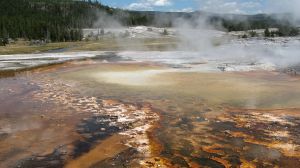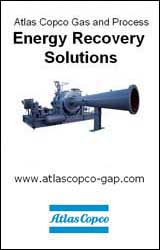One Step Forward & One Step Back: The attempted growth of geothermal power
 As a baseload, renewable power provider, one would think geothermal energy would have quite the pull. Once fully engineered and established, a geothermal power plant can generate reliable power around the clock with minimal costs. It also fills the intermittency gaps other renewables face, such as with wind or solar power. However, no new geothermal power plants were put online in the United States in 2014. And Canada has yet to see any commercial power plants whatsoever, which leads to the question: why isn’t geothermal energy gaining more popularity in North America?
As a baseload, renewable power provider, one would think geothermal energy would have quite the pull. Once fully engineered and established, a geothermal power plant can generate reliable power around the clock with minimal costs. It also fills the intermittency gaps other renewables face, such as with wind or solar power. However, no new geothermal power plants were put online in the United States in 2014. And Canada has yet to see any commercial power plants whatsoever, which leads to the question: why isn’t geothermal energy gaining more popularity in North America?
Despite a lack of new added capacity in the United States this past year, it is worth noting that the US still remains in the top three in terms of countries with installed geothermal power capacity (alongside the Philippines and Indonesia). California provides nearly 80% of the 3,440 megawatts (MW) of US geothermal capacity, and another 16% is found in Nevada.
As the Geothermal Energy Association (GEA) recently pointed out in a release, entitled “Geothermal Energy in 2014: Emerging Economies Power Up,” future development still remains a popular topic, especially in western states. The US Geological Survey estimates that there are an additional 500 MW of discovered geothermal power resources in Oregon, for example, and 1800 MW of undiscovered resources. The latest industry survey also identified 19 projects under development in the state, with estimated subsurface resources of 340 MW, which developers expect could provide 60 MW of additional power in Oregon within the next few years (if appropriate contracts are secured*).
In California, legislation AB 2363 was just passed in 2014, which directs the state’s Public Utilities Commission to improve its renewable power valuation process. According to the GEA, this could help the geothermal pull: “The state legislature came critically close to passing legislation supporting the Salton Sea Restoration and Renewable Energy Initiative that would promote geothermal energy to help address looming regional environmental problems.” (Read more here)
Seems “critically close” is the term geothermal energy has been facing in North America of late. Certainly, there is positive discussion and, in some places, even advantageous legislation, but little action. Even as a top three contender, the US’s capacity for geothermal output still makes up just less than one percent of the country’s energy pie.
And Canada doesn’t even make it on the list, despite being home to several leading geothermal power developers and offering some prime geothermal ground. A 2010 study of Canada’s geothermal potential found the best locations were in British Columbia, Alberta, and Saskatchewan. But, accordingly, even Ontario could produce geothermal power if someone dug deep enough. The study concluded that the potential for geothermal resources in Canada was significant.
Nevertheless, geothermal can be a tough sell when a country already has cheap power sources**. BC for instance, which was reported as one of the best places for geothermal development, already has an abundance of hydropower. The province has even been moving ahead with plans to develop a new hydro-electric station, Site C dam on the Peace River, which according to a presentation made by the Geothermal Energy Association (CanGEA), is at a cost point where geothermal is “at par or better.”
CanGEA maintains that geothermal power could supply the 1,100 MW of capacity and 5,100 gigawatt hours per year (GWh/yr) of energy that the proposed Site C dam offers. However “critically close” the geothermal option might have been, it wasn’t close enough. The Site C dam has now officially been approved for hydro-electric development.
Along with the high upfront costs of geothermal energy, there seems to be limited government support in Canada. The GEA also came to a similar conclusion in a US release, stating: “State policies recognize the value of solar power and natural gas, but do little to recognize geothermal power’s attributes.” They believe the lack of new geothermal development last year was, in part, due to the lapsing of federal production tax credit for new projects, as well as lowered demand across the market.
On a more positive note, geothermal energy has seen steady expansion on a global front, with an increase in online capacity—for the third year in a row—of between four and five percent in 2014. According to the GEA, the world market reached upwards of 12.7 gigawatts (GW) of geothermal power operational throughout 24 countries, reflecting about 700 MW of combined added growth. At the end of 2014, there was also 11.7 GW of capacity additions in development and 1.8 GW of power under construction in 80 countries.
Clearly, geothermal energy is growing, even if more slowly in North America. On a smaller scale, the Energy Department did announce funds near the end of 2014, though targeted to small businesses in two geothermal subtopics: innovations to develop under-utilized markets; and a technology transfer opportunity for co-produced geothermal resources.
Based on information on the Energy Department’s website (www.energy.gov), the first of these categories focuses on innovative products or technologies that develop new markets for geothermal energy—a promising proposal. The Geothermal Technologies Office will fund electricity production or direct-use applications, excluding ground source heat pumps. The second subtopic offers a technology transfer grant that focuses on developing a product that uses electromagnetic manipulation of magnetizable oil to improve current oil/gas/water separation technologies.
As geothermal energy becomes more popular globally, and even on a smaller scale via residential and commercial ground pumps, it can hopefully springboard on a larger scale in North America.
As Prometheus once said: “Big things have small beginnings.”
* Check out “10 Facts About Geothermal Energy in Oregon” at:
http://domesticfuel.com/2014/09/19/10-facts-about-geothermal-energy-in-oregon
** Read the “Top 5 Reasons Why Geothermal Power is Nowhere in Canada,” by Raphael Lopoukhine, to learn more at: www.desmog.ca/2014/02/26/top-5-reasons-why-geothermal-power-nowhere-canada
Geothermal Energy Association (GEA)
http://geo-energy.org
Canadian Geothermal Energy Association (CanGEA)
www.cangea.ca
Volume: January/February 2015











